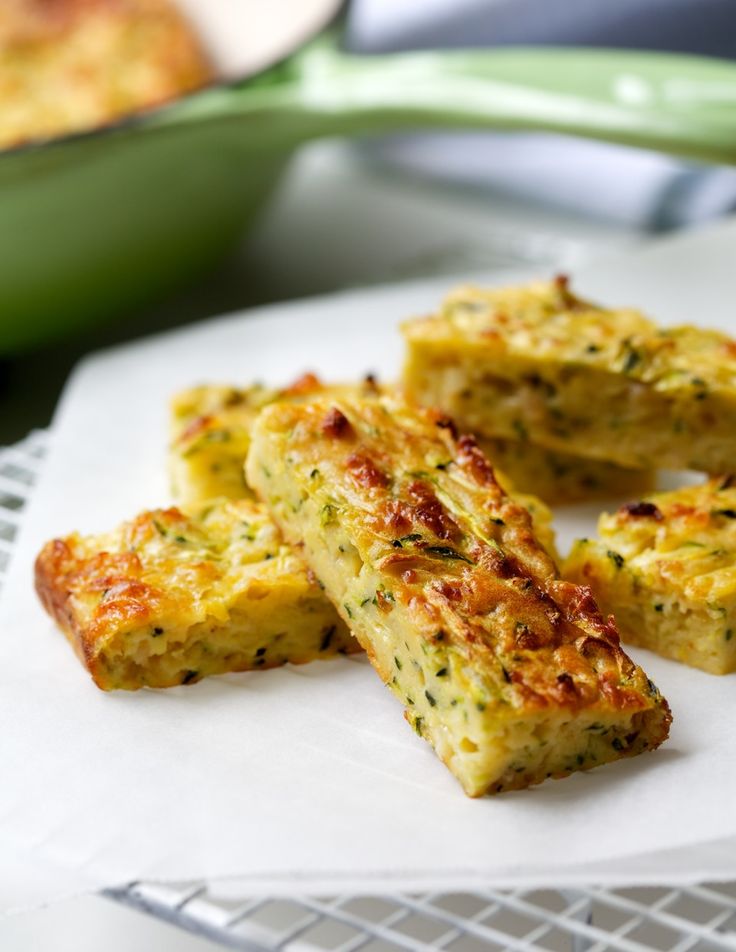| corn | Some farmers buy feed separately for males and females:
- Broilers are more suitable for PC 6-6.
- Layers - PC 1-24.
Advice from experts: if it is difficult to measure a portion of feed, then you can measure it with a matchbox, one contains 10 g of the mixture.
Weak quails
If the babies are weak, a different feeding scheme is needed.
Approximate composition:
- First day. Hard-boiled chopped chicken or quail eggs, ground with shells.
- The second day. Cottage cheese is added to the eggs, 2 g per chick per day.
- The third day.
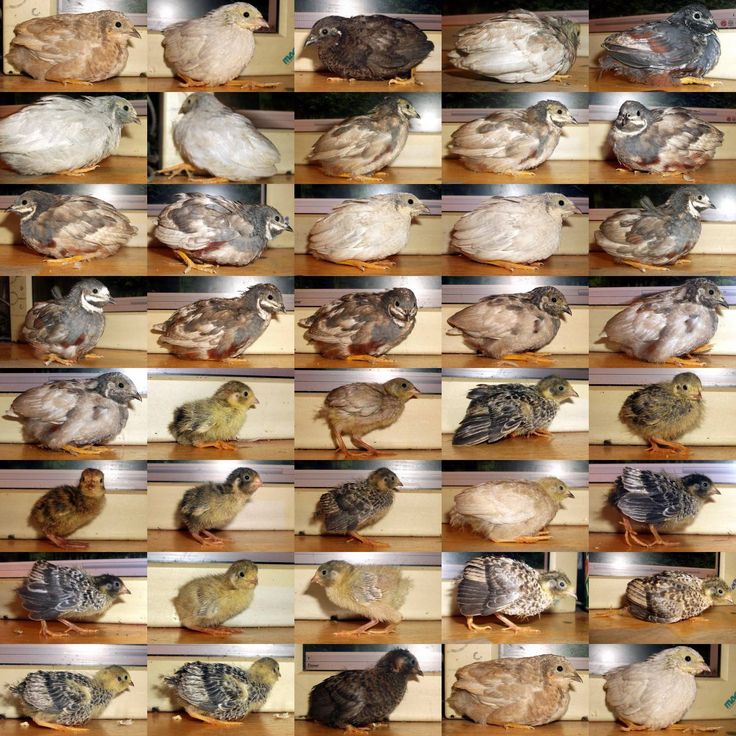 Chopped herbs are added.
Chopped herbs are added. - Fourth day . The number of eggs is reduced, and the number of cottage cheese is increased.
- The fifth day. Mixed with ground wheat groats, small worms. You can replace them in a mixture of boiled lean fish.
Greens are required, nettles, onion feathers, dandelions, lettuce are suitable. The more succulent feed, the faster the quail will get stronger.
It is necessary to feed 5-6 times a day, and only with a fresh mash, the remains of the former should be removed. It is allowed to give compound feed for broiler chickens.
If the farm is large, you can simplify the task and buy ready-made turkey mixtures by adding ground grain to them.
How to feed the chicks?
Quail chicks are fed, taking into account age, babies - 5-6 times a day, 5 g of feed per individual, and older ones - three times a day. But most importantly - at regular intervals! You can give bread, but then the benefits of the daily diet are reduced.
A few tips:
- Do not fill the feeders to the top, it is enough to fill two thirds. The reason is that quails eat carelessly and scatter food, which they then trample on.
- In the first week they are fed 5 times a day, on the 2nd and 3rd weeks the number is reduced to 4. From the fourth week, food is given three times a day.
- Quails of egg breeds from the age of 5 weeks are allocated 22-30 g per individual. And chicks of meat and egg breeds receive 25 g each.
- Whole pears and apples can be given to older babies, fruits can be squeezed between the bars, and the chicks will peck them willingly.
If all the conditions of feeding and rearing are observed in the first 4 weeks of life, the survival rate of young animals is 95-98%, and in the second 4 weeks - 98%.
Female Diet
When quails are one month old and are transitioned to adult food, many breeders advise separating the young by sex in order to formulate the correct diet. Laying hens should have a quarter of crude protein and enough protein. Otherwise, the rush will be weaker, and the yolks in the eggs will turn out to be enlarged or even double. And these are not suitable for masonry.
Laying hens should have a quarter of crude protein and enough protein. Otherwise, the rush will be weaker, and the yolks in the eggs will turn out to be enlarged or even double. And these are not suitable for masonry.
Basic products for mashing:
- cottage cheese;
- fish;
- seeds;
- grain - 12 g per day for each individual.
The norm for a female from 6 months old is 10 kg of compound feed per year. If he eats more or less, you need to pay attention to lighting, temperature in the cells. Quails are very sensitive to living conditions, which immediately affects their appetite.
You can determine the daily norm by goiter: its length is increased by 3 times, and guided by the resulting figure.
Diet for males
When the baby cheerfully crossed the threshold of six months of life, he needs to make adjustments to the diet, just like laying hens. In order to grow and mature faster, the farmer will have to stock up more on various cereals.
Basic products for mashing:
- barley;
- millet;
- insects;
- boiled fish;
- pulses, ground;
- poppy;
- oats;
- boiled eggs;
- canary seed.
What is important to consider when feeding male quails:
- Completely exclude rye.
- Give legumes in the form of cereals or boiled.
- Sprinkle poppy 5-7 g per individual.
- Add vetch by mixing with oats.
- Change the water in the drinker at least 2 times a day.
You can buy special food for male quails. If there is none, it is permissible to replace it with food for parrots.
The role of foods in the development of quails
The basis of the menu of these kids is corn, it has a lot of starch, it is considered a high-energy product. The only negative is that there is not enough vitamin B, amino acids and minerals that will need to be compensated. This is easy to do by adding meat and bone meal, fish and meal to the mixture.
This is easy to do by adding meat and bone meal, fish and meal to the mixture.
Features of other products in mash:
- Oats. Dietary feed, before giving to quails, the grain is cleaned from the film and crushed.
- Wheat. Nutritious and healthy. It is ground into flour and dried. Do not put in wet mixtures, as the flour turns into a sticky mess that sticks to the beak. Therefore, babies should not be given such food.
- Carrot. Forms vitamin A in the body of birds, rich in carotene.
- Yeast. Lots of vitamin B. Proteins obtained from quail yeast are better absorbed than proteins from plants.
- Curd. Provides protein. It is impossible to replace with milk, it can cause digestive upset in birds.
- Legumes : millet, colza, rapeseed. Contains many amino acids.
How to properly feed the quail?
Cages need to be properly equipped before babies can be released. It is important to consider that most chicks find food in the feeder themselves, but if the quails are lost, you need to attract their attention by tapping the tray with a stick. They perceive this as a call from their mother, and come running to peck.
It is important to consider that most chicks find food in the feeder themselves, but if the quails are lost, you need to attract their attention by tapping the tray with a stick. They perceive this as a call from their mother, and come running to peck.
Important tips:
- Feeders are made from cardboard trays, but for quails from 1 week of age. Tiny food is poured on a napkin or cardboard, because the sides will interfere with them. On the third day of life, chicks can put lids on jars.
- Since quails eat very sloppily, it is better to make feeders so that only the head gets through. Then the food will not be scattered, and dirt and stool will not get into it. A drywall tray with a mesh is suitable, where there are large cells. The sharp edges are bent, and the net is well fixed so that the chicks do not get confused.
- You have to learn how to drink quail, not everyone knows how. To do this, you can knock on the drinker or bring the chick to it and tilt its beak to the water.

- Water should be changed frequently, nipple drinkers ensure the purity of the liquid, but they have a significant disadvantage - they leak, and dampness appears in the cage. Therefore, it is best to install deep vacuum drinkers.
- Quails should not be undernourished, it is even dangerous in the first 3 weeks.
- Food must not be left if after 2 hours after feeding the portion has not been eaten, it is poured out and the feeders are cleaned.
A little trick: to attract the attention of quails to the feeder or drinkers, a clock installed nearby with a second hand will help.
Requirements for places to drink
Such a necessary item for babies as a drinker can become a source of danger for them. If the container is deep, the chicks climb to swim and often drown themselves.
Drinkers should be:
- Capacious but not deep.
- Made from materials that are easy to clean from dirt and food residue.
 Food grade plastic or stainless steel will do.
Food grade plastic or stainless steel will do. - Installed so that little ones cannot get inside.
Quails up to a month of life are given only boiled and cooled water.
Do quails need vitamins and other supplements?
Many beginners ask themselves: do quails really need vitamin supplements? After all, they are also enough in grain and greens. The question is how much the owner is concerned about the rapid growth and weight gain of the brood. If you want the quail to grow strong and healthy, then you can’t do without minerals. Moreover, mineral supplements are not so expensive. And most importantly, they can be completely replaced with affordable products:
- Eggshell . Boil and grind.
- Shells. They are also washed and crushed, the particles should be 0.5 mm.
- Green. Helps improve digestion. Experienced farmers say that at first, quails are extremely reluctant to eat it.
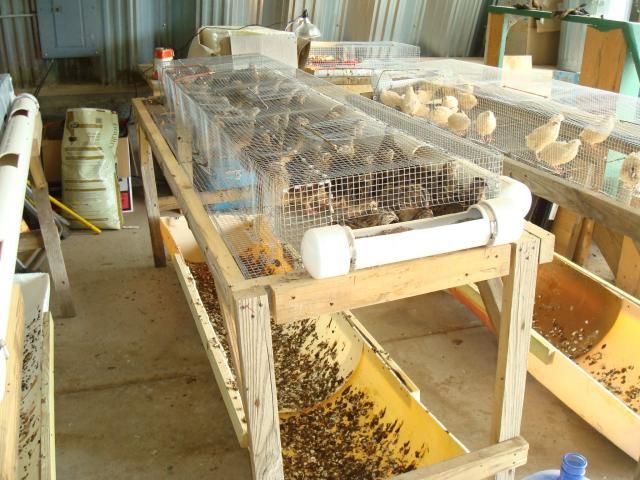 But, having tasted it, they completely sweep it out of the feeders.
But, having tasted it, they completely sweep it out of the feeders. - Cake, meal , meat and bone and fish meal. Provide protein and lysine.
- Drinking solutions . Once a week, a weak solution of potassium permanganate should be added to the drinkers, you can alternate with a solution of selenium.
- Vitamin C. Once every 10 days it is recommended to add it to water. Enough 1-2 tablets per liter of liquid.
- Add vitamin B separately.
Do not mix different vitamin supplements in water, they can "kill" each other during a chemical reaction in the liquid.
What is strictly forbidden to feed?
Although quails are considered omnivores, and they are not particularly capricious in food, there are still foods that should not be given to them. Otherwise, the risk of injuring the chick's stomach increases, as a result of which the baby may not survive.
Do not give:
- Sprouted potatoes. It contains a dangerous poison - solanine.
- Water in which potatoes were boiled.
- Leftover food from the table, in particular bread and sausage.
- Unshelled oats and barley.
- Silage, sauerkraut.
- Compound feed for pigs.
Quail food recipes
For farmers who find it inconvenient or expensive to buy food, recipes for self-prepared quail food are suitable.
The easiest way:
- Mix wheat or corn grits with curdled milk and boiled egg. Rub well. After the third day, nettles, cottage cheese and carrots, all crushed and grated, are put into this mixture.
- Mix boiled eggs in the shell with oatmeal or wheat groats or porridge, curdled milk. In a ratio of 4 to 1.
There are more complex recipes that are close to the composition of high-quality quail feed. It is better to give such mixtures from 4-5 weeks of life.
Recipe 1
Ingredients:
- Barley groats or barley - 100 g
- Corn groats - 400 g
- Meat and bone meal - 1 tsp.

- Unrefined vegetable oil - 0.5 tsp.
- Minced fish or meat - 50 g
- Cottage cheese - 50 g
- Greens - 50 g
Preparation: chop greens, grind with other ingredients.
Recipe for laying hens
Ingredients:
- corn-200 g
- Wheat-200 g
- premix for layers, 10%-80 g
- fried sunflower cake-90 g
- meat-core flour-45 g
- SOY SROT – 90 g
- Fodder yeast – 45 g
- Peas – 30 g
- Vegetable oil – 10 g
Preparation: boil peas, corn and wheat, grind, mix with the ingredients.
Recipe 3
Ingredients:
- Carrots - 100 g
- Wheat - 200 g
- Sunflower Cake - 100 g
- Soybean flame - 50 g
- meat -bone flour - 30 g
- Fodge yeast - 30 g
- 30 g - Sunflower oil - 10 g
Preparation: boil the carrots, grind, grind the wheat. Mix with other products, grind well.
Mix with other products, grind well.
Useful tips
At first glance, feeding the quail seems complicated, requiring attention and strict regimen. But over time, the owner will get used to such events.
Some important tips:
- If there are no special foods, you can compensate for the lack of important substances in the diet by increasing protein, greens, carrots and cabbage.
- Do not collect greens for quail along the roads, there is no benefit in it, but there is harm.
- Minced fish and meat for mixtures should be stored at minus temperatures of 1-3 degrees, and not longer than six months. It is better for large farms to buy in batches.
- It is more convenient to use a meat grinder to mix minced meat with other products. Both manual and electric will do.
- In spring, you can diversify your diet with a food mixture for parrots and canaries. If the young are breeding, it is better to remove factory feed from the diet for a month during breeding.

- Milk should not be given in its pure form, but adding 1-2 tablespoons to a serving instead of cottage cheese is quite acceptable.
- Quail feed should be at the same temperature as the air in the room.
Always carefully study the expiration date of feed, if you buy a batch for future use!
The problem of how and what to feed the quail is quite solvable, although it requires some effort. The main thing is to teach kids from the first days to a balanced diet so that they are not capricious when introducing unfamiliar food into the diet. It is only important to observe the dosage and not overdo it with additives. If you manage to cope with the young for the first time, then everything will turn out easier and easier. In any case, everything is known only by experience!
Author of the publication
Quail feeding | Fermer.Ru - Farmer.Ru - Main farm portal
As you know, Japanese quails are excellent laying hens, their eggs are unique in their composition, they contain these birds only in cages, and they do not have the opportunity to find additional food on their own, and therefore they must receive full feeding.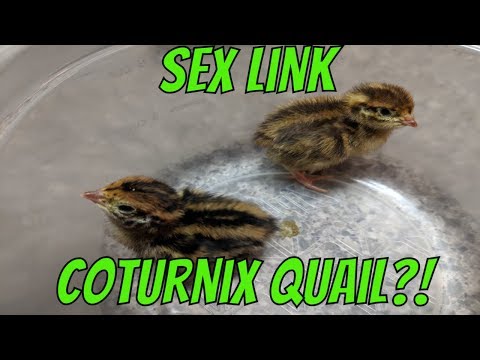 The feed of quails of egg and meat breeds should consist of three main components: protein, cereals, vitamins, plus shells, gravel and water . A deficiency or excess of at least one of the listed components can adversely affect the egg production and health of quails.
The feed of quails of egg and meat breeds should consist of three main components: protein, cereals, vitamins, plus shells, gravel and water . A deficiency or excess of at least one of the listed components can adversely affect the egg production and health of quails.
The feeding of Virginia and Japanese quails is about the same.
It is better to feed quails 3 or 4 times a day at the same time, distributing the feeding time evenly throughout the daylight hours.
Adult female quails need 21-25% crude protein in their diet. You should monitor the amount of protein almost daily. The lack or excess of protein is immediately displayed on the number and weight of eggs laid. With a lack of protein, females rarely rush, laid eggs are small, pecking often occurs. With an excess of protein in the feed, these birds often lay two-yolk eggs that are not suitable for incubation. A long-term violation of protein metabolism is harmful to the health of quails. Conventional poultry feeds tend to be deficient in protein. Therefore, to a complete poultry feed, for example PC-1, you should add 2 g of a protein source (cottage cheese, fish, minced meat, etc.) per day per bird. If you do not have compound feed, add 12 grams of protein feed per day for each adult female (Japanese breed) to the crushed grain mixture. For females who stop laying eggs due to age, the amount of protein in the diet is reduced. The need for protein in domestic, egg-laying breeds is higher than that of ordinary wild quails kept in captivity.
Therefore, to a complete poultry feed, for example PC-1, you should add 2 g of a protein source (cottage cheese, fish, minced meat, etc.) per day per bird. If you do not have compound feed, add 12 grams of protein feed per day for each adult female (Japanese breed) to the crushed grain mixture. For females who stop laying eggs due to age, the amount of protein in the diet is reduced. The need for protein in domestic, egg-laying breeds is higher than that of ordinary wild quails kept in captivity.
Vitamin feed for quails should be given in amounts that do not limit the needs of this type of bird.
The largest portion of food (≈ 40%), especially grain, is given to quails in the evening. Grain feed is digested more slowly than others by the bird, so the quail will not get very hungry overnight.
It is not recommended to overfeed laying hens; for better egg production, birds should experience slight hunger and peck food with appetite. However, some quail breeders argue that birds should always have food. Over-caring for your pets can cause the bird to become lethargic and possibly fat. Egg production, with this method of feeding, is somewhat reduced, feed consumption is overestimated. However, in large farms, quails, when properly maintained and cared for, are often fed from bunker feeders. Compound feed is poured into the bunker feeders, based on the daily intake.
Over-caring for your pets can cause the bird to become lethargic and possibly fat. Egg production, with this method of feeding, is somewhat reduced, feed consumption is overestimated. However, in large farms, quails, when properly maintained and cared for, are often fed from bunker feeders. Compound feed is poured into the bunker feeders, based on the daily intake.
The best feed is the special complete feed for quails , which can be replaced with feed for laying hens. The main difference between feed for Japanese quail and most other feed for poultry is the increased content of crude protein in it. The compound feed for quails contains 21-23% of crude protein. When fed with wet mash, quail can do without drinking water. When feeding with compound feed, each female should eat 22-27 g of compound feed per day. Feeding birds with compound feed is the most economical. To obtain 1 kg of egg mass, it is required to spend 5-7 kg of dry compound feed. In a year, 1 female eats about 9kg feed. Feed consumption increases with increasing daylight hours, lowering room temperature, incorrectly formulated diet, and for some other reasons, described below. If you are not familiar with the grams of food, imagine the size of the bird's crop, which she needs to fill 2-3 times a day.
Feed consumption increases with increasing daylight hours, lowering room temperature, incorrectly formulated diet, and for some other reasons, described below. If you are not familiar with the grams of food, imagine the size of the bird's crop, which she needs to fill 2-3 times a day.
Under natural conditions, quails feed on seeds of weeds and grasses, and while feeding young animals, they eat insects and their larvae. The young of these birds prefer food of animal origin - various insects, larvae and invertebrates.
It is known from many sources that in Japan quails are fed a mixture of 50% rice and 50% fish waste. Such quail food is pecked with great appetite. However, due to the high cost of rice and fish in our conditions, it is expensive to feed birds with such feed.
Under household conditions, cereals are considered the best forages : millet, sorghum and all types of crushed grain (except rye), canary seed. The granulometric composition of crushed grain and feed should correspond to the age of the bird.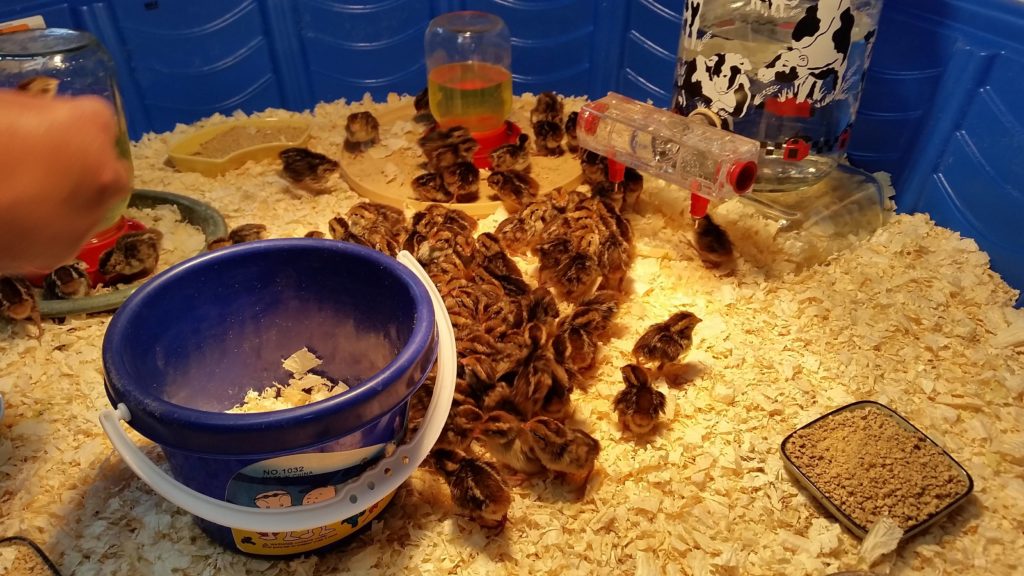 Temporary feeding of an adult bird with not crushed grain is allowed: wheat, barley and rice groats. The composition of grain mixtures includes crushed grain: wheat, corn, barley, oats and chumiza. Painted quails are recommended to introduce poppy into the grain diet, and already from an early age. males painted quails need 5-7 grams of grain feed per day. All quails benefit from various grain bran. From legumes, it is useful for birds to give crushed and steamed: peas, lentils, lupins, beans and soybeans. Vika is given in crushed form mixed with crushed oats, as it has a bitter taste that is unpleasant for birds.
Temporary feeding of an adult bird with not crushed grain is allowed: wheat, barley and rice groats. The composition of grain mixtures includes crushed grain: wheat, corn, barley, oats and chumiza. Painted quails are recommended to introduce poppy into the grain diet, and already from an early age. males painted quails need 5-7 grams of grain feed per day. All quails benefit from various grain bran. From legumes, it is useful for birds to give crushed and steamed: peas, lentils, lupins, beans and soybeans. Vika is given in crushed form mixed with crushed oats, as it has a bitter taste that is unpleasant for birds.
From root crops you can give boiled potatoes and peel them, especially grated carrots can often be given to birds. Temporarily grated carrots can be replaced with grated turnips and beets. Quails eat beets of any variety, which must first be boiled and grated. In winter, in the absence of greenery, quails eat grated carrots in fairly large quantities, so it is advisable to stock them up in advance.
Further, the quails must be given cut greens daily in unlimited quantities, which can be temporarily replaced with grated carrots or various vitamin supplements. Of the greens, quails prefer cabbage leaves, beets, dandelions, carrots, clover, nettles, alfalfa and green onions. Greens must first be chopped by chopping with a knife or scrolling in a meat grinder. In extreme cases, you can temporarily feed whole leaves. Quails do well on their own with hanging tops of turnips, carrots, and beets. It is especially useful to feed fresh chopped cabbage to quails in winter. To do this, cabbage, along with the leaves, can be frozen in the freezer, and with the onset of stable frosts, stored indoors or under snow at sub-zero temperatures. Cabbage should not be defrosted repeatedly. Quails can be fed grated and soaked apples, pumpkin, sauerkraut and lightly salted cabbage, chopped needles and coniferous flour. Herbal flour is very useful for birds.
In addition, quails need protein feeds , of which they are well suited: fish and meat and bone meal, waste or minced meat from fresh or boiled fish of almost any kind, cottage cheese, minced meat, powdered milk, earthworms and flour worms, slaughtered blood birds, ant pupae, various premixes and other protein supplements. Cakes and meals, crushed sunflowers and beans, boiled peas, flax and hemp seeds are also suitable for enriching feed with protein.
Cakes and meals, crushed sunflowers and beans, boiled peas, flax and hemp seeds are also suitable for enriching feed with protein.
Quails prefer foods containing animal protein. However, it is believed that when feeding soybeans, alfalfa flour and corn to quails, this type of poultry can do without animal protein. Feed enriched with animal protein is fed 2 times a day. In the heat of summer, quails use less energy to maintain body temperature, so the protein content of the feed can be reduced. Bony fish waste should be given to birds with caution. Do not give bony food to very hungry quails.
No less important for quails are minerals . Mineral feeds provide the content of calcium and other trace elements necessary for the bird. Calcium is essential for egg shell formation. Birds should always have sea or river ground shells, fine gravel is very desirable. Quails quickly peck out a small shell, leaving large, not crushed particles, so you should constantly monitor the presence of finely ground shells in birds, otherwise the quails will lay eggs in a bag, without a shell. Chalk and eggshells are suitable for temporary replacements for shells. With a lack of gravel, quails peck at the sand in which they bathe, which in itself is not dangerous, unless, of course, the sand has harmful impurities. Gravel and sand grind food in the muscular stomach, so quails better absorb the nutrients in the feed. Before feeding, the gravel should be thoroughly washed and placed in separate feeders.
Chalk and eggshells are suitable for temporary replacements for shells. With a lack of gravel, quails peck at the sand in which they bathe, which in itself is not dangerous, unless, of course, the sand has harmful impurities. Gravel and sand grind food in the muscular stomach, so quails better absorb the nutrients in the feed. Before feeding, the gravel should be thoroughly washed and placed in separate feeders.
Water must be kept by the birds at all times. Quails like to rinse their beaks in water, thereby polluting it, so the drinker must be washed 1-2 times a day. Periodically, for the prevention of gastrointestinal diseases, dissolve potassium permanganate crystals in water until a barely noticeable pink color is obtained. However, despite the benefits, birds do not like to drink such water.
feed additives include various vitamin supplements, premixes, hydrocarbon and feed yeast. Feed additives are fed to quails in strictly limited quantities. It is necessary to monitor the quality of the premix and other feeds that have a short shelf life.
It is necessary to monitor the quality of the premix and other feeds that have a short shelf life.
The toxic substance , as for all birds, is salt (in large quantities). Salty foods (such as cabbage) should be given in small portions, rinsed to remove salt, with caution and only in extreme cases. It is dangerous to feed quails with feed for cattle and pigs, as it contains large particles of salt, which can lead to bird poisoning. Sour and sweet foods are not harmful to quails.
If you don't sell quail compound feed may be suitable for feeding quails and commercially available parrot food. When feeding with grain mixtures, each female must eat daily 12 g of protein feed, greens and shells without restrictions. Protein feeds are recommended to be mixed with cereals. If you have a familiar angler or you are fishing yourself, then you will not have problems with protein feeds. You can provide quails with protein feed, for example, as follows. Japanese quails peck well any, even the smallest and low-grade fish. Fresh fish should not be infested with worms. Boil fish of unknown quality in boiling water. Boiled fish can be placed whole in the feeders, but it is better to scroll boiled or fresh fish in a meat grinder. The resulting minced meat, place in the freezer. Cut off pieces of minced meat with a knife, and after letting it thaw, give it to the birds, and they will thank you by laying large eggs.
Japanese quails peck well any, even the smallest and low-grade fish. Fresh fish should not be infested with worms. Boil fish of unknown quality in boiling water. Boiled fish can be placed whole in the feeders, but it is better to scroll boiled or fresh fish in a meat grinder. The resulting minced meat, place in the freezer. Cut off pieces of minced meat with a knife, and after letting it thaw, give it to the birds, and they will thank you by laying large eggs.
Shells can be bought in the market, in pet stores, or you can collect them yourself near water bodies. Pour boiling water over the shells brought from the shore and chop. The shells that you buy can also be ground further to save money.
Quails' favorite delicacies are: minced fresh fish, garden worms, cottage cheese, rice, hemp seeds, boiled crushed peas, grated carrots. The quails, who have never seen hemp seed, willingly eat it at the first feeding. However, hemp seed should not be given to young quails, due to the presence of narcotic substances in it.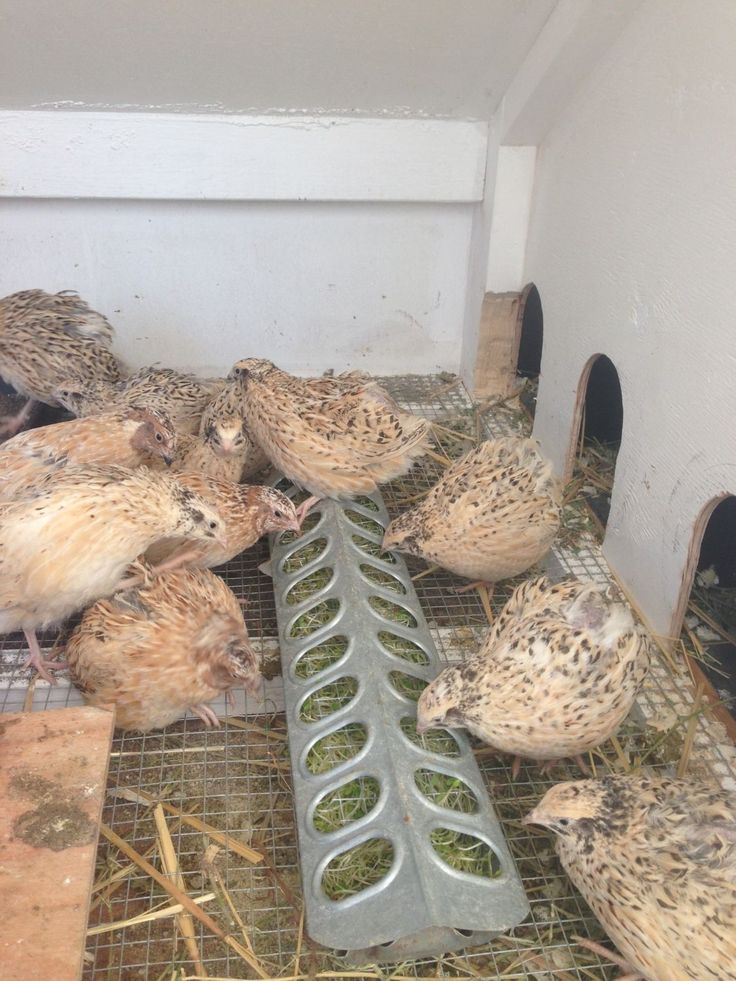 Hemp seeds can be given to adult birds only in small quantities, since this food contributes to bird obesity, is quite expensive and scarce. There is an opinion that when feeding a large amount of hemp seed, the bird can become blind. Quails are almost indifferent to flax seeds.
Hemp seeds can be given to adult birds only in small quantities, since this food contributes to bird obesity, is quite expensive and scarce. There is an opinion that when feeding a large amount of hemp seed, the bird can become blind. Quails are almost indifferent to flax seeds.
In winter, Japanese and other quails of egg breeds need green top dressing – lettuce, spinach. It is also good to feed the birds with green onions and germinated millet. Germination of grain allows you to increase the content of some vitamins, the starch of the grain is sugared, and its taste improves. For germination, use grain that has preserved good germination. Grain at the rate of daily consumption is soaked in a waterproof container and left for one day, after which it is scattered in boxes. The temperature in the grain layer is maintained within +(22-25)ºС. Germination of grain occurs on the second day. When sprouts 2-5 mm long appear, the grain is fed. Moist heat treatment and grain yeast are also recommended. In the spring, as soon as the first greens appear (usually young nettles and dandelions), pick and chop it for quails, they really need it! During stress and with certain diseases, the need for quails in vitamin feed increases dramatically.
In the spring, as soon as the first greens appear (usually young nettles and dandelions), pick and chop it for quails, they really need it! During stress and with certain diseases, the need for quails in vitamin feed increases dramatically.
Fig. 3. An ordinary feeder.
Feeders can be made from galvanized iron or other suitable materials. The depth of the feeder is 5 or 7 cm, the height is 15 cm. During feeding, quails scatter food strongly, so the feeders should be deep enough, with edges curved inward, and located away from the drinkers. Feeders should be filled with food no more than ⅔ of the volume. It is inconvenient to weigh bird feed every time, therefore, when distributing dry compound feed, grain mixtures and bran, it is convenient to use measuring dosing cups. It is also convenient to use scoops for cereals and bulk substances, which are not difficult to make on your own. Feeding front (width of the feeder in cm per 1 bird) of adult Japanese quails 3-5 cm.
When feeding with dry compound feed, it is possible to use an automatic feeder - a hopper. The hopper feeder is filled with food once a day, or even once every few days.
When feeding quails with worms, a tray should be placed in the cage. The fact is that quails eat worms willingly, but swallow them with difficulty, and therefore often drop them on the mesh floor. Worms fall from the mesh floor and spread around the house.
Feeders should be cleaned when they are dirty. Keep manure out of feeders and drinkers.
Quails are suitable for drinkers of almost any design. Many poultry books say that vacuum drinkers are most suitable for quails. However, in practice, quails quickly pollute these ingenious devices (vacuum drinkers), which are not very convenient to wash. Therefore, it is better to use simple cups or used cans as drinking bowls, which are easier to wash and boil against bacteria. Vacuum drinkers are good to use only for watering young animals. Drinkers are installed in front of the cage so that the birds drink water by sticking their heads through the bars of the cage. When keeping a large number of quails, it is advisable to install nipple drinkers, or drinkers with running water. The best drinkers for quails are currently considered nipple drinkers. Do not make drinking bowls from galvanized iron.
Drinkers are installed in front of the cage so that the birds drink water by sticking their heads through the bars of the cage. When keeping a large number of quails, it is advisable to install nipple drinkers, or drinkers with running water. The best drinkers for quails are currently considered nipple drinkers. Do not make drinking bowls from galvanized iron.
Be careful with salt, medicines and cement, do not let them get into the feed! Quail, like many birds, do not distinguish the taste of feed well enough, and can be poisoned by unfamiliar toxic substances. Bitter foods are not recommended. Do not give your bird ice cream or hot food. The temperature of the feed should be close to the temperature of the room where the quail is kept. Do not drastically change the composition of the feed and the feeding time of the birds. Accustom quails to new food gradually, adding new food in small doses. Quails may be less likely to lay with some poorly formulated diets.
If you do not have compound feed, feed the quails various grain mixtures with the addition of protein and vitamin feeds.
 .
.
Every time you open your incubator to remove dry chicks, you are risking all of the other unhatched chicks. The sudden drop in temperature and humidity from opening the incubator can kill unhatched chicks.
 The chick's mobility will decrease and it will no longer be able to feeder and drink. To prevent splayed legs, we recommend placing shelf liner in the bottom of the brooder. It should be cut to size and lie flat on the floor. Paper towels can also be used on top of the shelf liner to help absorb moisture. After 5 days, pine shavings can be added to the brooder. Never use cedar shavings as the dust can cause respiratory problems in poultry. The brooder floor should be cleaned often. All soiled shavings or paper towel should be changed.
The chick's mobility will decrease and it will no longer be able to feeder and drink. To prevent splayed legs, we recommend placing shelf liner in the bottom of the brooder. It should be cut to size and lie flat on the floor. Paper towels can also be used on top of the shelf liner to help absorb moisture. After 5 days, pine shavings can be added to the brooder. Never use cedar shavings as the dust can cause respiratory problems in poultry. The brooder floor should be cleaned often. All soiled shavings or paper towel should be changed. The chicks will create quite a mess with the feed and tend to fling it everywhere. Remove any food that gets damp as it will develop mould and attract flies.
The chicks will create quite a mess with the feed and tend to fling it everywhere. Remove any food that gets damp as it will develop mould and attract flies.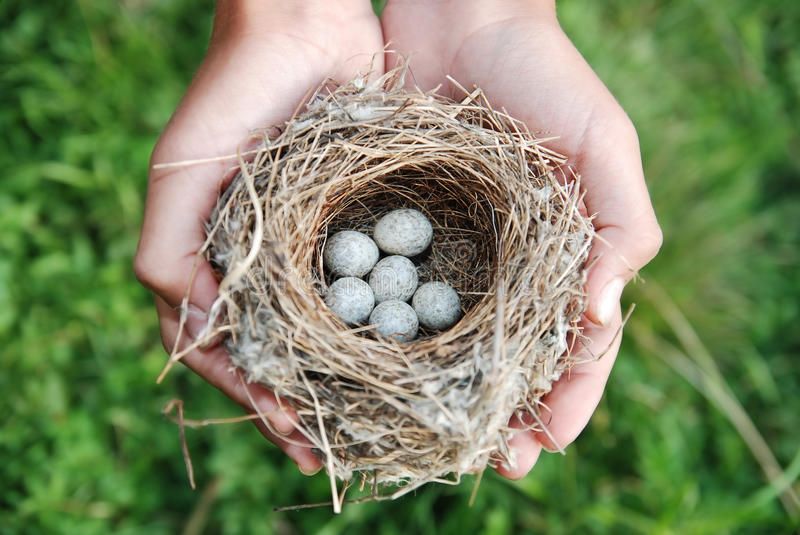 The lamp should be positioned to focus the heat on one end of the brooder to allow the chicks to escape the warmth if they start to overheat. It is very important to use an accurate thermometer to monitor the exact temperature in the brooder. If you find your chicks are huddling together under the lamp, they are too cold and the lamp should be moved closer. If you find your chicks are avoiding the warm area of the brooder, the lamp should be moved further away.
The lamp should be positioned to focus the heat on one end of the brooder to allow the chicks to escape the warmth if they start to overheat. It is very important to use an accurate thermometer to monitor the exact temperature in the brooder. If you find your chicks are huddling together under the lamp, they are too cold and the lamp should be moved closer. If you find your chicks are avoiding the warm area of the brooder, the lamp should be moved further away. ..
.. ..
.. Although some Canadian cities are legalizi...
Although some Canadian cities are legalizi...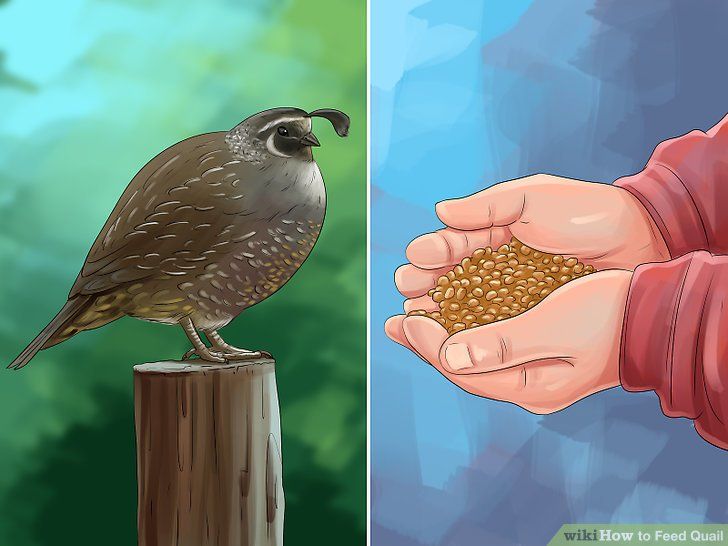 They're covered in a golden tan down with black or dark brown stripes down the back. They are a precocial bird which means they leavethe nest after hatching to follow the parents. They peck for food on their own. They need to be kept in warmer temperaturesthan other orphaned birds. Finely chopped hard boiled egg, alfalfa sprouts or broccoli florets (also finely chopped) are temporary foods. Quail will also peck at turkey or game bird starter from a feed store, and tiny mealworms.
They're covered in a golden tan down with black or dark brown stripes down the back. They are a precocial bird which means they leavethe nest after hatching to follow the parents. They peck for food on their own. They need to be kept in warmer temperaturesthan other orphaned birds. Finely chopped hard boiled egg, alfalfa sprouts or broccoli florets (also finely chopped) are temporary foods. Quail will also peck at turkey or game bird starter from a feed store, and tiny mealworms.  There are many important nuances to be aware of.
There are many important nuances to be aware of. 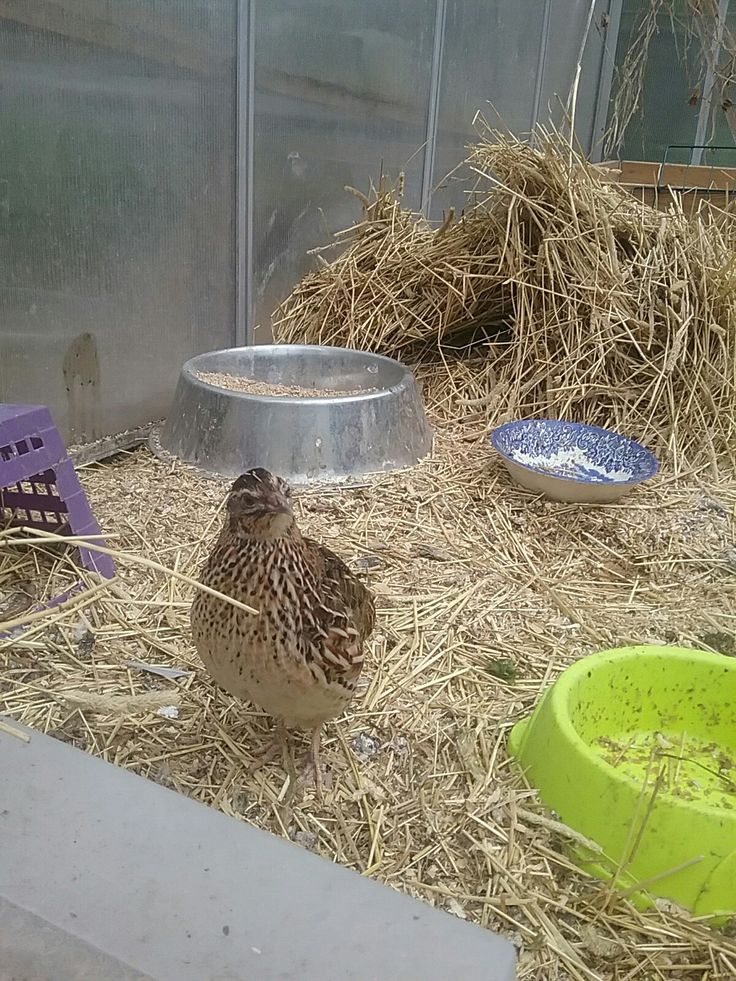

Be sure to grind.

 The diet should gain 280 kcal, of which 25% is protein.
The diet should gain 280 kcal, of which 25% is protein. 


 k.a "Nightjars" resemble owls and many rescue calls concerning an injured owl is actually a poorwill that is resting during the day. Always ask if the bird is sitting in a vertical position or horizontal.
k.a "Nightjars" resemble owls and many rescue calls concerning an injured owl is actually a poorwill that is resting during the day. Always ask if the bird is sitting in a vertical position or horizontal.  They're often mistaken for owls.
They're often mistaken for owls.  S, and reputedly the fastest flyer (150+ mph!) of all birds in North America.
S, and reputedly the fastest flyer (150+ mph!) of all birds in North America. 
 Reduce protein in feed by 15%. And the percentage of crushed grain - on the contrary, gradually increase.
Reduce protein in feed by 15%. And the percentage of crushed grain - on the contrary, gradually increase.  Chopped herbs are added.
Chopped herbs are added. 
 Laying hens should have a quarter of crude protein and enough protein. Otherwise, the rush will be weaker, and the yolks in the eggs will turn out to be enlarged or even double. And these are not suitable for masonry.
Laying hens should have a quarter of crude protein and enough protein. Otherwise, the rush will be weaker, and the yolks in the eggs will turn out to be enlarged or even double. And these are not suitable for masonry. 
 This is easy to do by adding meat and bone meal, fish and meal to the mixture.
This is easy to do by adding meat and bone meal, fish and meal to the mixture.  It is important to consider that most chicks find food in the feeder themselves, but if the quails are lost, you need to attract their attention by tapping the tray with a stick. They perceive this as a call from their mother, and come running to peck.
It is important to consider that most chicks find food in the feeder themselves, but if the quails are lost, you need to attract their attention by tapping the tray with a stick. They perceive this as a call from their mother, and come running to peck. 
 Food grade plastic or stainless steel will do.
Food grade plastic or stainless steel will do.  But, having tasted it, they completely sweep it out of the feeders.
But, having tasted it, they completely sweep it out of the feeders. 

 Mix with other products, grind well.
Mix with other products, grind well. 
 The feed of quails of egg and meat breeds should consist of three main components: protein, cereals, vitamins, plus shells, gravel and water . A deficiency or excess of at least one of the listed components can adversely affect the egg production and health of quails.
The feed of quails of egg and meat breeds should consist of three main components: protein, cereals, vitamins, plus shells, gravel and water . A deficiency or excess of at least one of the listed components can adversely affect the egg production and health of quails.  Therefore, to a complete poultry feed, for example PC-1, you should add 2 g of a protein source (cottage cheese, fish, minced meat, etc.) per day per bird. If you do not have compound feed, add 12 grams of protein feed per day for each adult female (Japanese breed) to the crushed grain mixture. For females who stop laying eggs due to age, the amount of protein in the diet is reduced. The need for protein in domestic, egg-laying breeds is higher than that of ordinary wild quails kept in captivity.
Therefore, to a complete poultry feed, for example PC-1, you should add 2 g of a protein source (cottage cheese, fish, minced meat, etc.) per day per bird. If you do not have compound feed, add 12 grams of protein feed per day for each adult female (Japanese breed) to the crushed grain mixture. For females who stop laying eggs due to age, the amount of protein in the diet is reduced. The need for protein in domestic, egg-laying breeds is higher than that of ordinary wild quails kept in captivity.  Over-caring for your pets can cause the bird to become lethargic and possibly fat. Egg production, with this method of feeding, is somewhat reduced, feed consumption is overestimated. However, in large farms, quails, when properly maintained and cared for, are often fed from bunker feeders. Compound feed is poured into the bunker feeders, based on the daily intake.
Over-caring for your pets can cause the bird to become lethargic and possibly fat. Egg production, with this method of feeding, is somewhat reduced, feed consumption is overestimated. However, in large farms, quails, when properly maintained and cared for, are often fed from bunker feeders. Compound feed is poured into the bunker feeders, based on the daily intake.  Feed consumption increases with increasing daylight hours, lowering room temperature, incorrectly formulated diet, and for some other reasons, described below. If you are not familiar with the grams of food, imagine the size of the bird's crop, which she needs to fill 2-3 times a day.
Feed consumption increases with increasing daylight hours, lowering room temperature, incorrectly formulated diet, and for some other reasons, described below. If you are not familiar with the grams of food, imagine the size of the bird's crop, which she needs to fill 2-3 times a day.  Temporary feeding of an adult bird with not crushed grain is allowed: wheat, barley and rice groats. The composition of grain mixtures includes crushed grain: wheat, corn, barley, oats and chumiza. Painted quails are recommended to introduce poppy into the grain diet, and already from an early age. males painted quails need 5-7 grams of grain feed per day. All quails benefit from various grain bran. From legumes, it is useful for birds to give crushed and steamed: peas, lentils, lupins, beans and soybeans. Vika is given in crushed form mixed with crushed oats, as it has a bitter taste that is unpleasant for birds.
Temporary feeding of an adult bird with not crushed grain is allowed: wheat, barley and rice groats. The composition of grain mixtures includes crushed grain: wheat, corn, barley, oats and chumiza. Painted quails are recommended to introduce poppy into the grain diet, and already from an early age. males painted quails need 5-7 grams of grain feed per day. All quails benefit from various grain bran. From legumes, it is useful for birds to give crushed and steamed: peas, lentils, lupins, beans and soybeans. Vika is given in crushed form mixed with crushed oats, as it has a bitter taste that is unpleasant for birds. 
 Cakes and meals, crushed sunflowers and beans, boiled peas, flax and hemp seeds are also suitable for enriching feed with protein.
Cakes and meals, crushed sunflowers and beans, boiled peas, flax and hemp seeds are also suitable for enriching feed with protein.  Chalk and eggshells are suitable for temporary replacements for shells. With a lack of gravel, quails peck at the sand in which they bathe, which in itself is not dangerous, unless, of course, the sand has harmful impurities. Gravel and sand grind food in the muscular stomach, so quails better absorb the nutrients in the feed. Before feeding, the gravel should be thoroughly washed and placed in separate feeders.
Chalk and eggshells are suitable for temporary replacements for shells. With a lack of gravel, quails peck at the sand in which they bathe, which in itself is not dangerous, unless, of course, the sand has harmful impurities. Gravel and sand grind food in the muscular stomach, so quails better absorb the nutrients in the feed. Before feeding, the gravel should be thoroughly washed and placed in separate feeders.  It is necessary to monitor the quality of the premix and other feeds that have a short shelf life.
It is necessary to monitor the quality of the premix and other feeds that have a short shelf life.  Japanese quails peck well any, even the smallest and low-grade fish. Fresh fish should not be infested with worms. Boil fish of unknown quality in boiling water. Boiled fish can be placed whole in the feeders, but it is better to scroll boiled or fresh fish in a meat grinder. The resulting minced meat, place in the freezer. Cut off pieces of minced meat with a knife, and after letting it thaw, give it to the birds, and they will thank you by laying large eggs.
Japanese quails peck well any, even the smallest and low-grade fish. Fresh fish should not be infested with worms. Boil fish of unknown quality in boiling water. Boiled fish can be placed whole in the feeders, but it is better to scroll boiled or fresh fish in a meat grinder. The resulting minced meat, place in the freezer. Cut off pieces of minced meat with a knife, and after letting it thaw, give it to the birds, and they will thank you by laying large eggs.  Hemp seeds can be given to adult birds only in small quantities, since this food contributes to bird obesity, is quite expensive and scarce. There is an opinion that when feeding a large amount of hemp seed, the bird can become blind. Quails are almost indifferent to flax seeds.
Hemp seeds can be given to adult birds only in small quantities, since this food contributes to bird obesity, is quite expensive and scarce. There is an opinion that when feeding a large amount of hemp seed, the bird can become blind. Quails are almost indifferent to flax seeds.  In the spring, as soon as the first greens appear (usually young nettles and dandelions), pick and chop it for quails, they really need it! During stress and with certain diseases, the need for quails in vitamin feed increases dramatically.
In the spring, as soon as the first greens appear (usually young nettles and dandelions), pick and chop it for quails, they really need it! During stress and with certain diseases, the need for quails in vitamin feed increases dramatically. 
 Drinkers are installed in front of the cage so that the birds drink water by sticking their heads through the bars of the cage. When keeping a large number of quails, it is advisable to install nipple drinkers, or drinkers with running water. The best drinkers for quails are currently considered nipple drinkers. Do not make drinking bowls from galvanized iron.
Drinkers are installed in front of the cage so that the birds drink water by sticking their heads through the bars of the cage. When keeping a large number of quails, it is advisable to install nipple drinkers, or drinkers with running water. The best drinkers for quails are currently considered nipple drinkers. Do not make drinking bowls from galvanized iron. 







